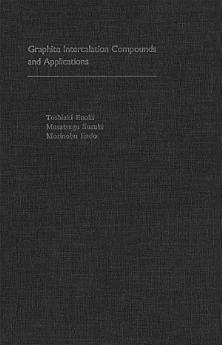Graphite Intercalation Compounds and Applications
Toshiaki Enoki · Masatsugu Suzuki · Morinobu Endo
มี.ค. 2003 · Oxford University Press
eBook
456
หน้า
family_home
มีสิทธิ์
info
reportคะแนนและรีวิวไม่ได้รับการตรวจสอบยืนยัน ดูข้อมูลเพิ่มเติม
เกี่ยวกับ eBook เล่มนี้
Graphite intercalation compounds are a new class of electronic materials that are classified as graphite-based host guest systems. They have specific structural features based on the alternating stacking of graphite and guest intercalate sheets. The electronic structures show two-dimensional metallic properties with a large variety of features including superconductivity. They are also interesting from the point of two-dimensional magnetic systems. This book presents the synthesis, crystal structures, phase transitions, lattice dynamics, electronic structures, electron transport properties, magnetic properties, surface phenomena, and applications of graphite intercalation compounds. The applications covered include batteries, highly conductive graphite fibers, exfoliated graphite and intercalated fullerenes and nanotubes.
ให้คะแนน eBook นี้
แสดงความเห็นของคุณให้เรารับรู้
ข้อมูลในการอ่าน
สมาร์ทโฟนและแท็บเล็ต
ติดตั้งแอป Google Play Books สำหรับ Android และ iPad/iPhone แอปจะซิงค์โดยอัตโนมัติกับบัญชีของคุณ และช่วยให้คุณอ่านแบบออนไลน์หรือออฟไลน์ได้ทุกที่
แล็ปท็อปและคอมพิวเตอร์
คุณฟังหนังสือเสียงที่ซื้อจาก Google Play โดยใช้เว็บเบราว์เซอร์ในคอมพิวเตอร์ได้
eReader และอุปกรณ์อื่นๆ
หากต้องการอ่านบนอุปกรณ์ e-ink เช่น Kobo eReader คุณจะต้องดาวน์โหลดและโอนไฟล์ไปยังอุปกรณ์ของคุณ โปรดทำตามวิธีการอย่างละเอียดในศูนย์ช่วยเหลือเพื่อโอนไฟล์ไปยัง eReader ที่รองรับ





